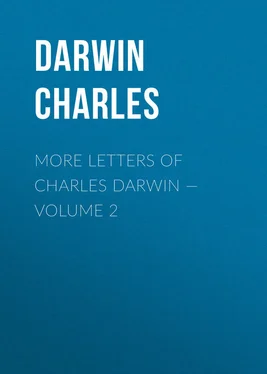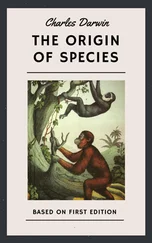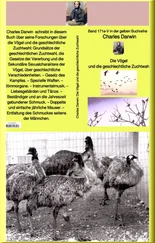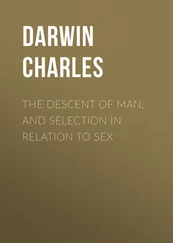Charles Darwin - More Letters of Charles Darwin — Volume 2
Здесь есть возможность читать онлайн «Charles Darwin - More Letters of Charles Darwin — Volume 2» — ознакомительный отрывок электронной книги совершенно бесплатно, а после прочтения отрывка купить полную версию. В некоторых случаях можно слушать аудио, скачать через торрент в формате fb2 и присутствует краткое содержание. Жанр: foreign_antique, foreign_prose, на английском языке. Описание произведения, (предисловие) а так же отзывы посетителей доступны на портале библиотеки ЛибКат.
- Название:More Letters of Charles Darwin — Volume 2
- Автор:
- Жанр:
- Год:неизвестен
- ISBN:нет данных
- Рейтинг книги:5 / 5. Голосов: 1
-
Избранное:Добавить в избранное
- Отзывы:
-
Ваша оценка:
- 100
- 1
- 2
- 3
- 4
- 5
More Letters of Charles Darwin — Volume 2: краткое содержание, описание и аннотация
Предлагаем к чтению аннотацию, описание, краткое содержание или предисловие (зависит от того, что написал сам автор книги «More Letters of Charles Darwin — Volume 2»). Если вы не нашли необходимую информацию о книге — напишите в комментариях, мы постараемся отыскать её.
More Letters of Charles Darwin — Volume 2 — читать онлайн ознакомительный отрывок
Ниже представлен текст книги, разбитый по страницам. Система сохранения места последней прочитанной страницы, позволяет с удобством читать онлайн бесплатно книгу «More Letters of Charles Darwin — Volume 2», без необходимости каждый раз заново искать на чём Вы остановились. Поставьте закладку, и сможете в любой момент перейти на страницу, на которой закончили чтение.
Интервал:
Закладка:
LETTER 442. TO A.R. WALLACE.
(442/1. Dr. Clifford Allbutt's view probably had reference to the fact that the sperm-cell goes, or is carried, to the germ-cell, never vice versa. In this letter Darwin gives the reason for the "law" referred to. Mr. A.R. Wallace has been good enough to give us the following note: — "It was at this time that my paper on 'Protective Resemblance' first appeared in the 'Westminster Review,' in which I adduced the greater, or rather, the more continuous, importance of the female (in the lower animals) for the race, and my 'Theory of Birds' Nests' ('Journal of Travel and Natural History,' No. 2) in which I applied this to the usually dull colours of female butterflies and birds. It is to these articles as well as to my letters that Darwin chiefly refers." — Note by Mr. Wallace, May 27th, 1902.)
Down, April 30th {1868}.
Your letter, like so many previous ones, has interested me much. Dr. Allbutt's view occurred to me some time ago, and I have written a short discussion on it. It is, I think, a remarkable law, to which I have found no exception. The foundation lies in the fact that in many cases the eggs or seeds require nourishment and protection by the mother-form for some time after impregnation. Hence the spermatozoa and antherozoids travel in the lower aquatic animals and plants to the female, and pollen is borne to the female organ. As organisms rise in the scale it seems natural that the male should carry the spermatozoa to the female in his own body. As the male is the searcher, he has required and gained more eager passions than the female; and, very differently from you, I look at this as one great difficulty in believing that the males select the more attractive females; as far as I can discover, they are always ready to seize on any female, and sometimes on many females. Nothing would please me more than to find evidence of males selecting the more attractive females. I have for months been trying to persuade myself of this. There is the case of man in favour of this belief, and I know in hybrid unions of males preferring particular females, but, alas, not guided by colour. Perhaps I may get more evidence as I wade through my twenty years' mass of notes.
I am not shaken about the female protected butterflies. I will grant (only for argument) that the life of the male is of very little value, — I will grant that the males do not vary, yet why has not the protective beauty of the female been transferred by inheritance to the male? The beauty would be a gain to the male, as far as we can see, as a protection; and I cannot believe that it would be repulsive to the female as she became beautiful. But we shall never convince each other. I sometimes marvel how truth progresses, so difficult is it for one man to convince another, unless his mind is vacant. Nevertheless, I myself to a certain extent contradict my own remark, for I believe far more in the importance of protection than I did before reading your articles.
I do not think you lay nearly stress enough in your articles on what you admit in your letters: viz., "there seems to be some production of vividness...of colour in the male independent of protection." This I am making a chief point; and have come to your conclusion so far that I believe that intense colouring in the female sex is often checked by being dangerous.
That is an excellent remark of yours about no known case of male alone assuming protective colours; but in the cases in which protection has been gained by dull colours, I presume that sexual selection would interfere with the male losing his beauty. If the male alone had acquired beauty as a protection, it would be most readily overlooked, as males are so often more beautiful than their females. Moreover, I grant that the life of the male is somewhat less precious, and thus there would be less rigorous selection with the male, so he would be less likely to be made beautiful through Natural Selection for protection. (442/2. This does not apply to sexual selection, for the greater the excess of males, and the less precious their lives, so much the better for sexual selection. {Note in original.}) But it seems to me a good argument, and very good if it could be thoroughly established. I do not know whether you will care to read this scrawl.
LETTER 443. TO A.R. WALLACE. Down, May 5th {1868?}.
I am afraid I have caused you a great deal of trouble in writing to me at such length. I am glad to say that I agree almost entirely with your summary, except that I should put sexual selection as an equal, or perhaps as even a more important agent in giving colour than Natural Selection for protection. As I get on in my work I hope to get clearer and more decided ideas. Working up from the bottom of the scale, I have as yet only got to fishes. What I rather object to in your articles is that I do not think any one would infer from them that you place sexual selection even as high as No. 4 in your summary. It was very natural that you should give only a line to sexual selection in the summary to the "Westminster Review," but the result at first to my mind was that you attributed hardly anything to its power. In your penultimate note you say "in the great mass of cases in which there is great differentiation of colour between the sexes, I believe it is due almost wholly to the need of protection to the female." Now, looking to the whole animal kingdom, I can at present by no means admit this view; but pray do not suppose that because I differ to a certain extent, I do not thoroughly admire your several papers and your admirable generalisation on birds' nests. With respect to this latter point, however, although, following you, I suspect that I shall ultimately look at the whole case from a rather different point of view.
You ask what I think about the gay-coloured females of Pieris. (443/1. See "Westminster Review," July, 1867, page 37; also Letter 440.) I believe I quite follow you in believing that the colours are wholly due to mimicry; and I further believe that the male is not brilliant from not having received through inheritance colour from the female, and from not himself having varied; in short, that he has not been influenced by selection.
I can make no answer with respect to the elephants. With respect to the female reindeer, I have hitherto looked at the horns simply as the consequence of inheritance not having been limited by sex.
Your idea about colour being concentrated in the smaller males seems good, and I presume that you will not object to my giving it as your suggestion.
LETTER 444. TO J. JENNER WEIR. Down, May 7th {1868}.
I have now to thank you for no less than four letters! You are so kind that I will not apologise for the trouble I cause you; but it has lately occurred to me that you ought to publish a paper or book on the habits of the birds which you have so carefully observed. But should you do this, I do not think that my giving some of the facts for a special object would much injure the novelty of your work. There is such a multitude of points in these last letters that I hardly know what to touch upon. Thanks about the instinct of nidification, and for your answers on many points. I am glad to hear reports about the ferocious female bullfinch. I hope you will have another try in colouring males. I have now finished lepidoptera, and have used your facts about caterpillars, and as a caution the case of the yellow-underwings. I have now begun on fishes, and by comparing different classes of facts my views are getting a little more decided. In about a fortnight or three weeks I shall come to birds, and then I dare say that I shall be extra troublesome. I will now enclose a few queries for the mere chance of your being able to answer some of them, and I think it will save you trouble if I write them on a separate slip, and then you can sometimes answer by a mere "no" or "yes."
Читать дальшеИнтервал:
Закладка:
Похожие книги на «More Letters of Charles Darwin — Volume 2»
Представляем Вашему вниманию похожие книги на «More Letters of Charles Darwin — Volume 2» списком для выбора. Мы отобрали схожую по названию и смыслу литературу в надежде предоставить читателям больше вариантов отыскать новые, интересные, ещё непрочитанные произведения.
Обсуждение, отзывы о книге «More Letters of Charles Darwin — Volume 2» и просто собственные мнения читателей. Оставьте ваши комментарии, напишите, что Вы думаете о произведении, его смысле или главных героях. Укажите что конкретно понравилось, а что нет, и почему Вы так считаете.












